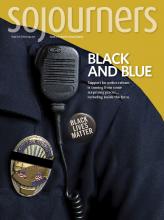DURING A FRACTIOUS election year marked by “how low can you go?” rhetoric, a hopeful word about democracy can be hard to find. When our civil society and citizenry seem evermore splintered by issues of race, immigration, wealth inequality, women’s health, guns, and ideology, who would dare speak with sincerity about finding common cause and increasing enfranchisement?
Rev. William Barber II, for one. In The Third Reconstruction: Moral Mondays, Fusion Politics, and the Rise of a New Justice Movement, he argues that “fusion coalitions rooted in moral dissent have power to transform our world from the grassroots community up.” He believes that people committed to different causes, of different races and faiths and no faith, can come together to advance broader justice and perhaps even revive a democracy that has seen better days.
He believes this because he’s seen it: He helped forge the 2013 “Moral Mondays” protests in North Carolina that brought more than 100,000 people to rallies across the state protesting voting restrictions and corporate-funded extremist legislation, and had sister rallies in several other states. But this wasn’t a spontaneous eruption—the broad-based coalition behind Moral Mondays first formed in 2007 to advocate for expanding voting rights.
In this book Barber, a Disciples of Christ pastor and president of the North Carolina chapter of the NAACP, uses autobiography and U.S. history to root the story—the successes, failures, and wisdom gained—of the work that led to the Moral Mondays campaign and beyond.
As a young pastor, Barber learned valuable lessons when he participated in a failed effort to unionize a textile factory in Martinsville, Va. In the aftermath, he meditated on Psalm 94 (“Who rises up for me against the wicked? Who stands up for me against evildoers?”) and found there the spiritual mandate for sustained moral dissent, even when political victory is out of sight. But he also took an honest look at his strategic failings; a key one was not bringing white pastors and workers into the effort, allowing the white factory owners to divide and conquer the workers along racial lines. His wariness from his own negative experiences with white people had tripped him up. He writes:
Read the Full Article

